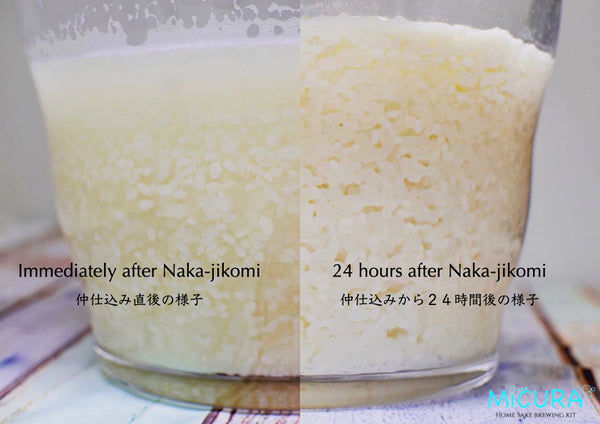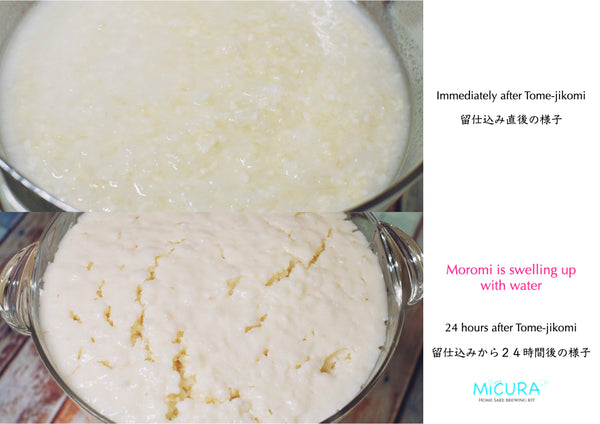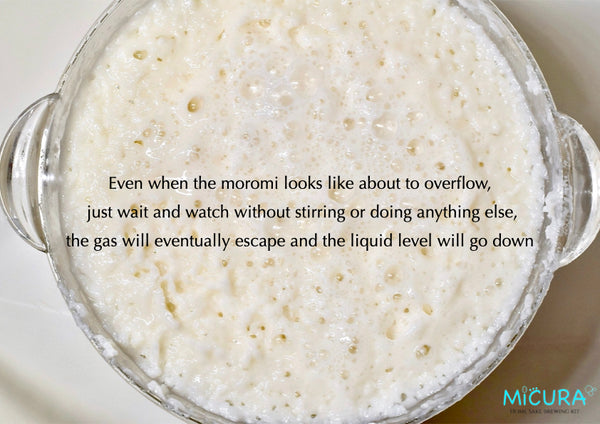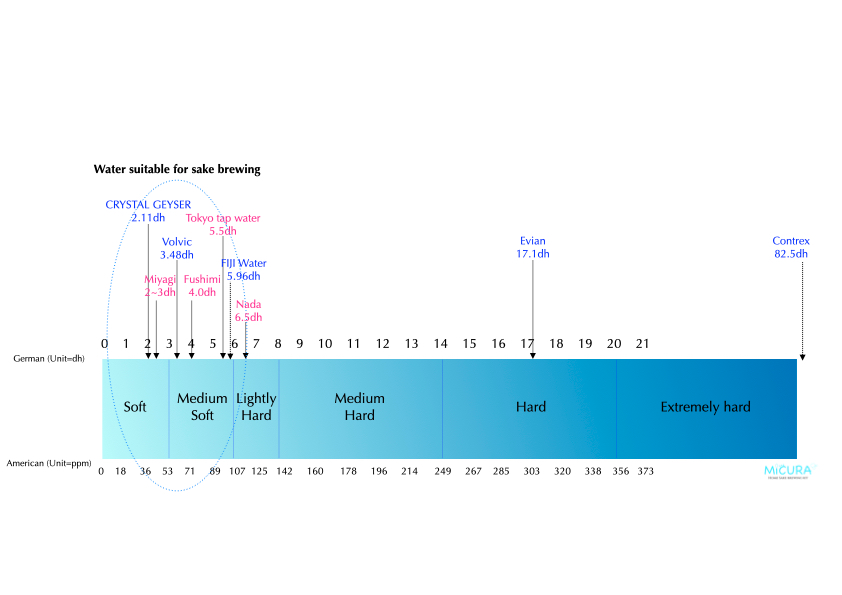FAQ
Q1. What if I get lost while making Sake?
MiCURA provide our members the technical support that you can ask questions whenever you need.
The support is a privilege given to our members.
Please feel free to contact us if you have anything you don’t understand.
Q2. I’m worried if I can make Sake because I’m busy and rarely at home.
MiCURA Kotohajime was invented to realize fun and simple home brewing of Sake.
For Sandan-shikomi, the first process of the first few days, the temperature control is required. But for the next 1 month, Moromi can be kept in the refrigerator and does’t have any particular work to do until the pressing day. With MiCURA, even a busy person make Sake.
Since moromi changes every day, you can fully enjoy making Sake even just checking it once a day when you’re home.
Q3. I tasted my moromi too much everyday. I’m worried if it remains till the pressing day.
I’m sorry but there is nothing I can do about it.
But, it is the privilege of home-brewers to taste moromi as much as you like!
(In the case of Sake brewery liable to taxation, the tax of moromi (Sake mash) in the tank is unpaid yet. So strictly speaking, tasting the moromi is tax evasion.)
You should openly enjoy the privilege! Just you’d better make more next time.
We have the refill for our members too 😊
Q4. Can I buy it in Japan?
Sure you can. Domestic shipping fee is much cheeper than that of international shipping. Also, the delivery date is much shorter (1~3 days).
We can deliver to the airport, your hotel or friends house etc…
※Our products are also available for customers live in Japan, however home brewing is prohibited in Japan so refrain from using them inside Japan.

Q5. I bought a starter set that does not come with containers.What kind of container should I prepare?
A. The complete set comes with two special containers designed for MiCURA, but the starter set does not include containers, so you will need to arrange your own. The requirements for a suitable container are presented below, but 83% of customers who purchase from the online shop choose the complete set, as it is difficult to find a container that meets these requirements and has the perfect size - neither too large nor too small.
Shape
Cylindrical containers with a diameter of about 18~20 cm and a capacity of about 5L are preferable (gas is produced during the fermentation process, causing the moromi to swell).
❌ Box-shaped or distorted-shaped containers: poor flowability will cause rice to clump up in the corners.
❌ Containers with a bottom that is too wide (length of bottom > height): the surface area of the moromi becomes too large and causes excessive evaporation content.
Material
The material can be glass, plastic or aluminium, but highly transparent materials make it more enjoyable to observe the fermentation process.
MiCURA’s container included in the complete set is the perfect size for MiCURA's moromi, so that it allows you to brew with a minimum of space.
The mouth of the MiCURA sake bag fits exactly into the mouth of the container*, so the pressing process can be carried out smoothly by one person.
*2 containers are included in the complete set. One is for the moromi tank and the other is for shibori (pressing).

Q6. I’m in the middle of sandan-jikomi (three-stage preparation). I am concerned that there seems to be too little water in my moromi.
A. In the three-stage preparation until about three days after the tome-jikomi, the moromi is very "ricey" as the rice has absorbed water and swelled up.
At that time, its state may feel too soft for rice and too firm for porridge.
You may be worried to find so little water in your moromi, but this is perfectly normal at this stage! The rice will start to dissolve more and more from here.
The phenomenon of the rice in the moromi gradually dissolving and liquefying is related to the enzymes from the koji.
Koji is a living organism, and the enzymes are substances it produces, which are a type of protein.
These enzymes possess the ability to break down the starch in the rice into sugar(glucose).
The yeast, which cannot metabolise starch or protein, utilises the glucose produced by the koji as its energy source for fermentation.


Q7. My moromi overflowed!
A. Moromi (sake mash) expands due to the gas produced during fermentation. The containers of MiCURA are designed to be moderately larger than the actual volume of the moromi to accommodate this expansion. However, under certain circumstances such as the ones presented below, the yeast activity (growth and fermentation) may spurt when the material is at its maximum after sandan-jikomi, causing the moromi to overflow from the container. (I understand that this might suggest we should design larger containers. However, making the containers unnecessarily larger would occupy a lot of space in the wine cellar or cold storage room where you will place your moromi, which would result in a trade-off with convenience.)
Over-stirring
1. When you stir, the gas escapes, and the liquid level drops momentarily. But if you check it again an hour later, it has already expanded to its original height or more. This happens because the oxygen supplied by stirring helps the yeast to propagate, and the yeast that was pushed upward with the gas returns into the moromi, making the yeast's activity more vigorous. So, if you think it might overflow, you might want to avoid stirring.
The temperature is too high
2. A significant factor that accelerates yeast activity is temperature. Please review the temperature first. Is it higher than the temperature indicated in the "How to Brew MiCURA" document? In this case, cooling the moromi can be effective, but be aware that sudden temperature changes can cause stress to the yeast.
3. Even if you've addressed points 1 and 2 and the situation is still not stable, there's a final resort: Reducing the number of yeast. The reason why this is the last resort is that the yeast provided with MiCURA is already calculated to the necessary amount, so it's rare that there are too many yeasts. However, it is possible that there might be more yeast than expected due to certain reasons like using water that is (too) rich in nutrients, or high temperatures that make the yeast activity too active. In such cases, you can take measures to reduce the number of yeast. Specifically, you can remove the foam on the surface of the moromi where many yeast are concentrated. It's enough to throw away the foam that sticks to the plastic wrap that has fluffed over the moromi, without putting it back into the moromi. Note that if you rush to reduce the number of yeast too much when the yeast is active, it may hinder the fermentation later on. Please consider this as the last resort.

Q8. What kind of water should I prepare for sake brewing?
A. There is a saying, “Where there is good water, there is good Sake”.
Japan is a country rich with forestry and blessed with much water. It has the third highest annual rainfall in the world, about twice the world average.
Water makes up 80% of sake.
Japan is a country with soft water by global standards.
The European continent, including France and Italy, is a gently sloping rock mountain that contains many minerals that were once seas long ago. Therefore, the water stays in the strata for a long time, and becomes hard water containing many minerals.
On the other hand, Japan is a long, narrow island country with close mountain-to-sea proximity, and it has a steep terrain. Therefore, the water passes through the strata quickly. Furthermore, because the strata of forests contain fewer minerals than rocky mountains, the water in Japan is soft water with few minerals.
The water of Nada (in Hyogo) is hard, so it is commonly called “masculine sake (Otoko-sake)“ and is said to be a dry sake with a sharp finish. The water of Fushimi (in Kyoto) is soft, so it is often referred to as "female sake (“Onna-sake) and is said to make a soft, sweet sake. However, whether sake is sweet or dry is something that can be designed by brewing technology, so the notion that water makes sake sweet or dry doesn't really apply to modern sake brewing.
Either way, all water in Japan is considered soft by global standards (see chart below).
I digressed. Let's look at the quality of water suitable for sake brewing specifically.
Useful Components (Necessary Inorganic Salts)
Potassium
Magnesium
Phosphorus
Firstly, the above three are essential inorganic salts necessary for yeast growth and fermentation. Other elements such as chlorine and calcium are ingredients that help the enzymes from koji to dissolve, indirectly aiding in yeast fermentation.
Harmful Components
Iron
Manganese
Iron is one of the most hated components in sake brewing. If iron is mixed in, the sake will be colored brown, and it will also adversely affect the aroma and taste. Manganese also accelerates the deterioration of sake due to ultraviolet rays.
Conditions for Brewing Water
Color: colourless and transparent
Smell and taste : No abnormalities
Iron: Less than 0.02 ppm, preferably undetectable
Manganese: Less than 0.02 ppm
Nitrite Nitrogen: Should be undetectable
pH: Neutral or slightly alkaline (pH6~8)
Ammonia Nitrogen: Should be undetectable
Bacterial Acidity: Less than 2 mL
Coliform Bacteria: Should be undetectable
E. Coli: Should be undetectable
(Source: Japan Brewing Association "Commentary on Standard Analytical Methods of Research Institute for Brewing")
Please refer to the above when using bottled mineral water or water server water. If you want to use tap water, it would be good to check the quality of tap water in your area. As for brands of mineral water, soft water brands such as CRYSTAL GEYSER and Volvic are recommended.

